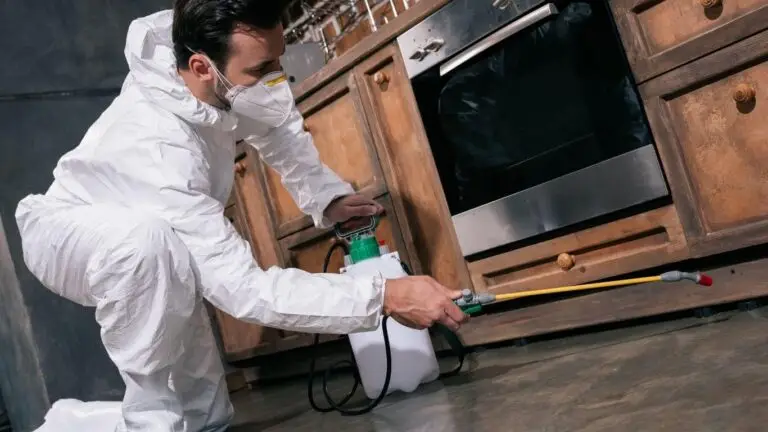Ultimate Guide to Pantry Pest Prevention
Keep Your Kitchen Pest-Free
A pantry infested with pests is every homeowner’s nightmare. From tiny ants and moths to beetles and even rodents, these unwelcome intruders can quickly contaminate your food, damage packaging, and compromise the hygiene of your kitchen. At Wise Pest Solutions, we know how frustrating and unsettling a pantry pest infestation can be. That’s why we’ve created this comprehensive guide to help you prevent pantry pests and maintain a clean, pest-free kitchen.

In this article, we’ll cover:
✅ Common types of pantry pests you may encounter
✅ Warning signs of an infestation to watch for
✅ Proactive prevention tips to keep pests out
✅ DIY pest control methods for minor infestations
✅ When to call a professional pest control service
By following these expert-backed strategies, you can protect your pantry and ensure your food stays safe from contamination.
Common Types of Pantry Pests
Pantry pests are small, persistent, and often hard to spot until they’ve already caused damage. Here are the most common culprits that invade kitchens:
1. Indian Meal Moths
What they target: Flour, cereal, grains, dried fruit, pet food
Signs of infestation: Silky webbing inside packages, larvae crawling in food, small moths flying around the pantry
2. Pantry Beetles (Flour Beetles, Cigarette Beetles, Drugstore Beetles)
What they target: Spices, nuts, grains, flour, dried herbs
Signs of infestation: Tiny holes in packaging, small beetles inside food containers, powdery residue
3. Ants
What they target: Sugary foods, crumbs, spills, syrup, honey
Signs of infestation: Trails of ants leading to food sources, small piles of food debris near walls
4. Cockroaches
What they target: Almost any food, especially starchy or greasy items
Signs of infestation: Droppings (small black specks), musty odor, shed skins, live roaches scurrying at night
5. Rodents (Mice & Rats)
What they target: Grains, cereals, pet food, packaged snacks
Signs of infestation: Gnaw marks on packaging, droppings, scratching noises in walls
Knowing which pests are invading your pantry is the first step in effective pest control.
Signs of a Pantry Pest Infestation – Don’t Ignore These!
Pantry pests are sneaky, but they leave behind clear warning signs. If you notice any of the following, you may have an infestation:
🔍 Damaged food packaging (small holes, tears, or chew marks)
🐛 Larvae or webbing inside flour, cereal, or rice bags
🐜 Increased ant or roach activity near food storage areas
👃 Unusual odors (musty, rancid, or foul smells from food)
💩 Droppings or pest excrement near food containers
If you spot any of these signs, act immediately to prevent the problem from worsening.
How to Prevent Pantry Pests – Proactive Tips
The best way to avoid pantry pests is through preventative measures. Here’s how to keep them out for good:
1. Keep Your Pantry Clean & Crumbs-Free
Wipe down shelves regularly with vinegar or soapy water.
Sweep up spills immediately (even tiny crumbs attract pests).
Store pet food in sealed containers and clean bowls daily.
2. Store Food Properly in Airtight Containers
Transfer grains, flour, and cereals into glass, plastic, or metal containers with tight lids.
Avoid keeping food in original packaging (cardboard and thin plastic are easy for pests to chew through).
Check expiration dates and discard old or infested food.
3. Seal Entry Points to Block Pests
Caulk cracks around windows, doors, and baseboards.
Install door sweeps to prevent ants and roaches from slipping in.
Repair torn window screens to keep flying pests out.
4. Inspect Groceries Before Storing Them
Examine bags of flour, rice, and spices for holes or signs of pests before bringing them home.
Freeze susceptible items (like flour or grains) for 48 hours to kill any hidden eggs.
DIY Pantry Pest Control Methods
If you’ve already spotted pests, try these natural and DIY solutions before calling a professional:
1. Vacuum & Deep Clean the Pantry
Remove all items and vacuum shelves, cracks, and corners to eliminate eggs and larvae.
2. Use Natural Repellents
Bay leaves or cedar blocks repel moths and beetles.
Diatomaceous earth (food-grade) kills crawling insects safely.
3. Set Up Traps
Sticky traps catch moths and beetles.
Ant baits lure and eliminate ant colonies.
When to Call a Professional Pest Control Service
While DIY methods work for small infestations, severe cases require expert intervention.
Tom Wildlife and Pest Controls offers:
🔎 Thorough pantry inspections to identify pest sources
💡 Customized treatment plans for long-term prevention
🛡️ Eco-friendly pest control solutions that are safe for families
If pests keep coming back, don’t wait—call the pros!